Menus
- The pioneers of the four-cylinder shaft
- Monumental sobriety of the Munch
- Mammut demands full attention
- You have to experience the charm of a Munch
- MV Agusta 750 S – athlete with a powerful voice
- Dull rumble, hoarse roar
- MV needs a clear steering impulse
- Honda CB 750 Four – the perfect all-rounder
- Butter-soft and precisely switchable gear
- In detail: Munch-4 1200 TTS
- In detail: MV Agusta 750 S
- In detail: Honda CB 750 Four
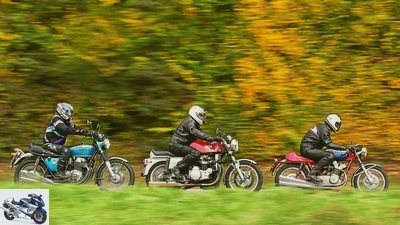
Jahn
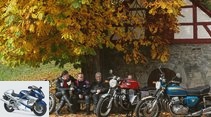
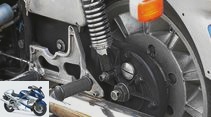
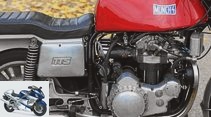
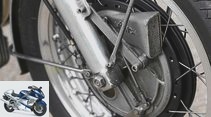
33 photos
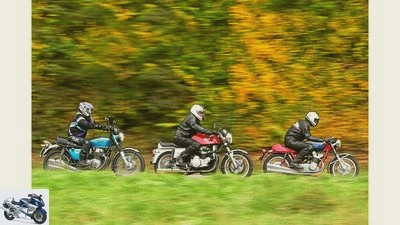
Jahn
1/33
It couldn’t be any more engine: with its transversely installed four-cylinder in-line engine, the Honda CB 750 caused a sensation in 1969. Only Munch and MV Agusta had something comparable on offer in the early 1970s.
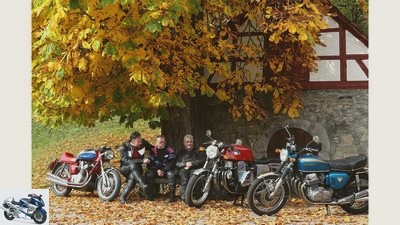
Jahn
2/33
Golden prospects: The day is still young, the tanks are full, the sun is shining – perfect conditions for a journey through time with the four-cylinder pioneers of the modern age.
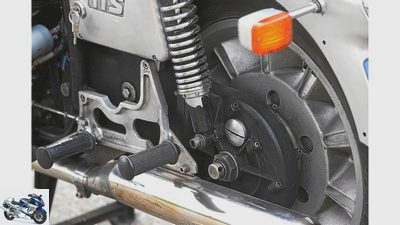
Jahn
3/33
Light and stable: the rear wheel and the swing arm, which is designed as a closed oil bath chain case on the left, were cast from electron.
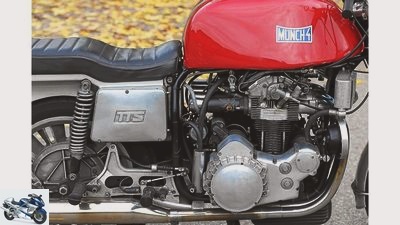
Jahn
4/33
Contemporary reconstruction: Friedel Munch offered the retrofit of the Kugelfischer injection for 5000 marks. Two oil coolers take care of your well-being.
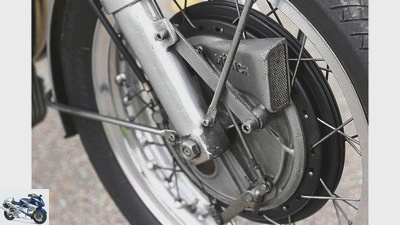
Jahn
5/33
In the early 1960s, the large Munch duplex drum brake, cast from electron, was one of the best of its kind. Today it retards very slowly.
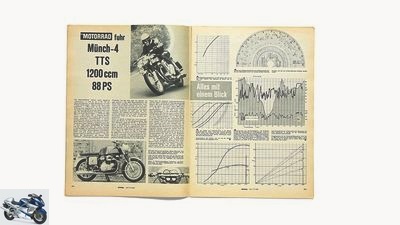
Jahn
6/33
… Everything about the machine is huge: Respect and enthusiasm alternate in a snap ‘description of his Nurburgring laps with the 1200. It leaves no doubt that Munch is only for connoisseurs and experts.
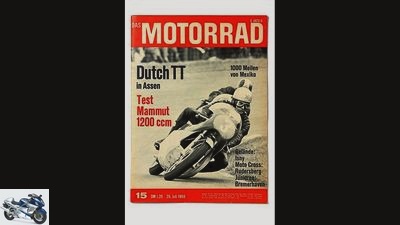
Jahn
7/33
MOTORCYCLE 15/1969 …
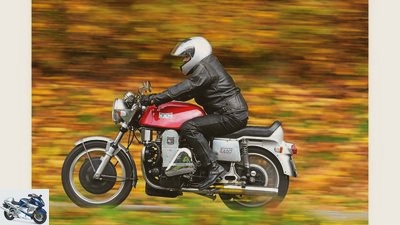
Jahn
8/33
Muench-4 1200 TTS.
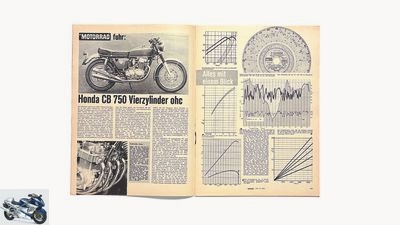
Jahn
9/33
… Klacks was very impressed by how simple and easy the Honda makes it for its pilot: “Everything is so wonderfully handy and light, the machine is so wonderfully easy to turn and on track that you are usually faster than you think.”
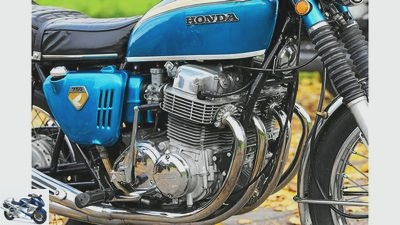
Jahn
10/33
The benchmark and role model for generations of four-cylinder motorcycles: Honda’s powerful 750 also impressed with its manners and robustness.
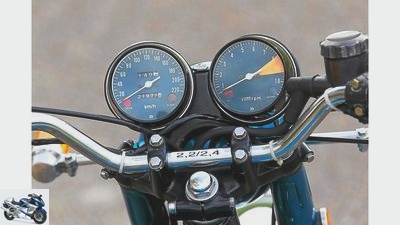
Jahn
11/33
Perfection made visible: the clearly readable and calmly indicating Denso instruments were the best there were on motorcycles at the time.
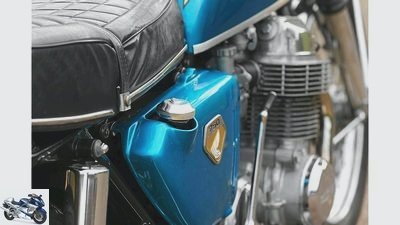
Jahn
12/33
Oil tank: Honda relied on dry sump lubrication, which always guarantees sufficient pressure to lubricate the plain bearings of the crankshaft and camshaft.
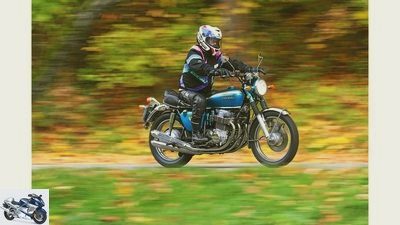
Jahn
13/33
Honda CB 750 Four, price 1970: 6,650 marks.
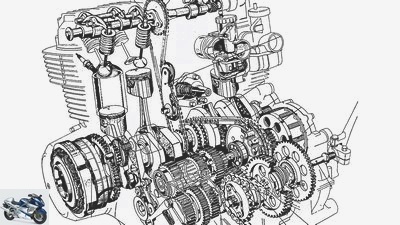
Jahn
14/33
The design principle still in use today: the central drive of the camshaft and main gear shaft.
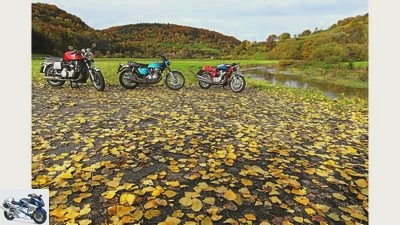
Jahn
15/33
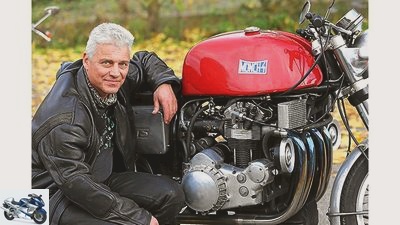
Jahn
16/33
Lorenz Beck about the Munch-4 1200 TTS: For me, driving the Munch is both a challenge and a passion that I never want to be without.
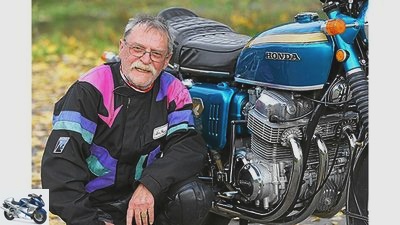
Jahn
17/33
Pit Spang on the Honda CB 750 Four: For me it is always a great, sublime feeling to experience this beautiful mother of all current superbikes on country roads.
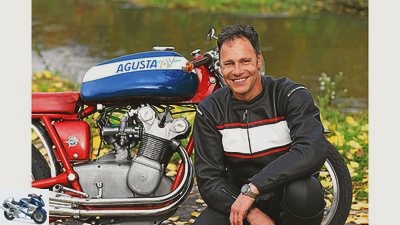
Jahn
18/33
Uli Holzwarth about the MV Agusta 750 S: Style, technology and history fit together perfectly here.
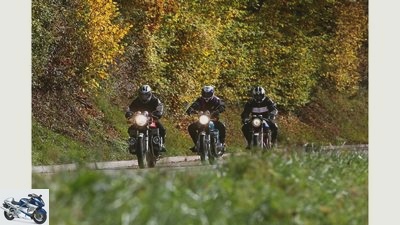
Jahn
19/33
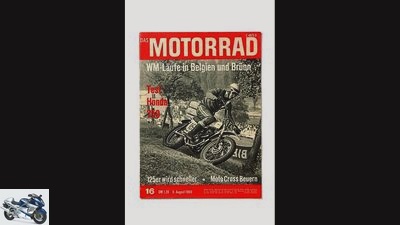
Jahn
20/33
MOTORCYCLE 16/1969 …
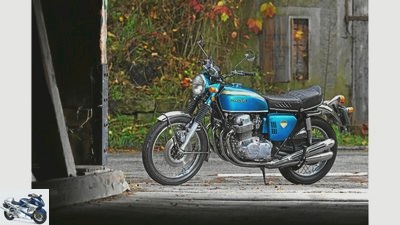
Jahn
21/33
Honda CB 750 Four.
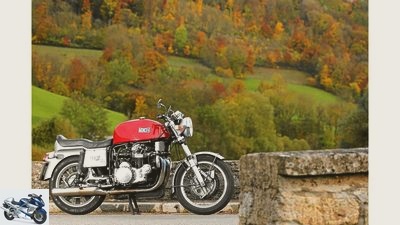
Jahn
22/33
Muench-4 1200 TTS, price 1972: 12,745 marks.
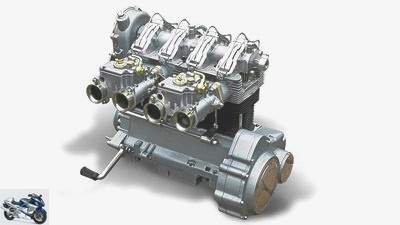
Jahn
23/33
Although it comes from a car, the design of the NSU four-cylinder still shows motorcycle genes.
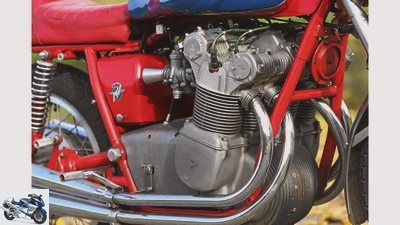
Jahn
24/33
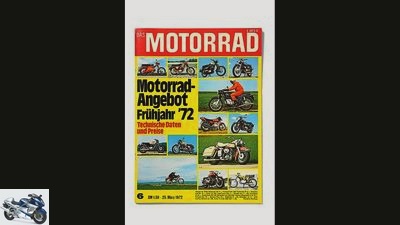
Jahn
25/33
MOTORCYCLE 6/1972 …
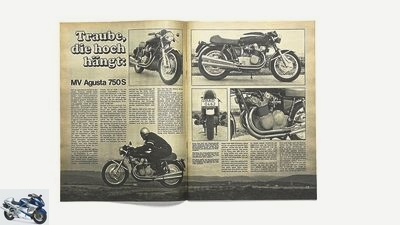
Jahn
26/33
… No test, just a driving report was a no-brainer with the MV, which was “more exclusive than a Mercedes 600 or a Rolls Royce” in Germany. Ferraris seem to have been more common, as Klacks compared the sound of the MV to it.
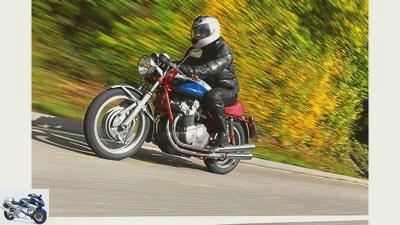
Jahn
27/33
Lorenz in his element: The MV still cuts a fine figure on country roads. The gathered sitting position is not as uncomfortable as it looks.
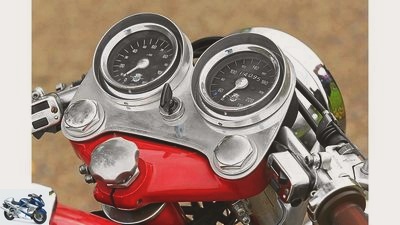
Jahn
28/33
Not particularly informative: The wriggling hands in the small instruments only give an idea of the true values. Low handlebars.
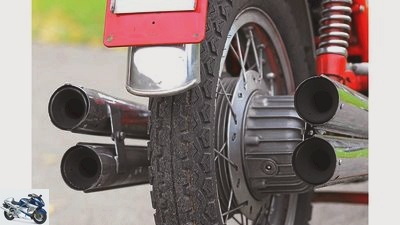
Jahn
29/33
Sound body: The four megaphones shouldn’t be called a silencer, the soundscape is gorgeous. Drive influences from the cardan are practically not felt.
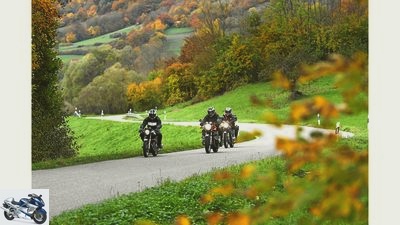
Jahn
30/33
One goal, not two opinions: the three motorcycle legends with four cylinders are among the most fascinating milestones.
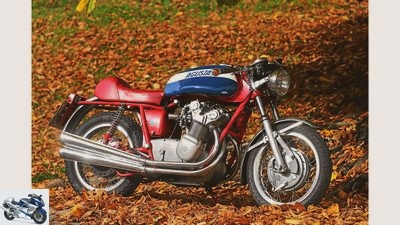
Jahn
31/33
MV Agusta 750 S, price 1971: 13,000 marks.
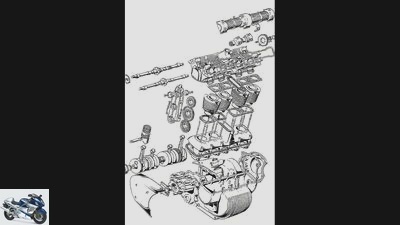
Jahn
32/33
Typical MV: The cylinder, head, control tower and the six-bearing crankshaft are screwed together on the shoulder.
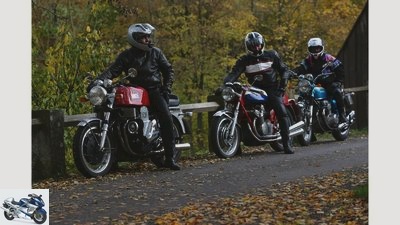
Jahn
33/33
On the move with the Honda CB 750 Four, Munch-4 1200 TTS and MV Agusta 750 S.
The pioneers of the four-cylinder shaft
Content of
With its transversely installed four-cylinder in-line engine, the Honda CB 750 Four was a sensation in 1969. Only the Munch-4 1200 TTS and the MV Agusta 750 S were anything comparable in the early 1970s. A trip with the pioneers of the four-cylinder shaft.
As a little steppe, it was my dream motorcycle, the Munch-4. No other machine at that time had more cylinders, was bigger, stronger, heavier, faster. With the M.After all, you always had the trump card in your hand with the motorcycle quartet. Every now and then I saw in the gossip columns of the multicolored that the Trumm could also be a dream. From time to time hello-free super-rich were photographed there, who played as playboys with Munch on the streets of southern France.
Buy complete article
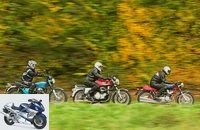
On the move with the Honda CB 750 Four, Munch-4 1200 TTS and MV Agusta 750 S.
The pioneers of the four-cylinder shaft
Munch-4 1200 TTS – Bull with rough edges
Jahn
Muench-4 1200 TTS, price 1972: 12,745 marks.
Which makes the encounter with my very early childhood dream all the more exciting. Not least because on this trip through the autumnal Jagsttal with the Honda CB 750 Four and the MV Agusta 750 S, the other two four-cylinder pioneers are also involved. So three absolute highlights in motorcycle history, the twelve cylinders of which make for a huge spectacle when you warm up in the morning.
It stands broad and brawny, the Munch 1200 TTS, radiates an uncanny presence. Although the Honda looks much more pleasing with its harmonious lines and the MV Agusta beguiles with its classy elegance, my gaze remains on the Munch. A colossus with corners and edges, the center of which is the massive NSU four-cylinder. You can tell by looking at the motorcycle that it wasn’t just one thing that happened here, but that it took a lot of effort, sweat and constructive talent before Friedel had adapted the car engine to its new purpose. Some things seem improvised, many things cleverly constructed, the overall picture is unique.
Monumental sobriety of the Munch
The Munch is a techno motorcycle, which with its brittle functionality gives a harsh rejection of all aesthetic discussions. And that’s exactly why people like Lorenz Beck love them. From bikers who regularly get stuck up to their wrists in the oil sump of their classics. And therefore be able to estimate what effort it must have cost in the mid-1960s to get such an over-motorcycle on its wheels.
The red 1973 1200 TTS with the contemporary conversion to the capricious Kugelfischer injection system has been parked in Lorenz Garage for 13 years, where it shares the space with a number of other classics. This includes not only another mammoth with a long wheelbase, but also the MV Agusta 750 S from 1971 in its original condition. As a classy counterpoint to the monumental sobriety of Munch, so to speak. Because the Munch lover Beck naturally also has a keen sense of aesthetics. “For me the MV is the most beautiful motorcycle of all,” he leaves no doubt.
Pit Spang thinks similarly when he talks about his Honda CB 750 Four, which is just warming up with a subtle whisper. It’s an original K0 model from 1970 that Honda fans have owned for three years. It is logical that the mother of all modern Japanese superbikes should not be missing here when it comes to tackling an atmospheric autumn ride with the first three series four-cylinder machines of the modern era. The fact that at the time of the market launch of the Honda in 1969 with the hapless 600 MV and the 1100 Munch a chapter in four-cylinder history of modern times should not be ignored here. For both, however, it is the larger-displacement models that have become legendary as the “Fab Four”.
Mammut demands full attention
Two or three roaring gas bursts from the MV tear me out of my thoughts – Lorenz warns to leave! It’s good that he doesn’t notice my lump in my throat when he directs me into the Munch saddle with a pat on the shoulder. For a brief moment the dizzying values of the three machines flash through my head, then the mammoth demands my full attention. With a hard “clone”, first gear engages – quite unusually when stepping down.
In order not to have to constantly get used to it, Lorenz has reversed the shift pattern of the cartilaginous four-speed transmission by means of a changed deflection, the three other levels are shifted up. From the first few meters, Munch makes it unmistakably clear to me that work has to be done here. Regardless of whether it is a clutch, gearbox, braking or steering – everything takes power. The narrow, unusually cranked handlebars and the high center of gravity require you to consciously initiate curves, with a strong pull on the handlebars and pressure on the notches.
It takes a while to get used to the peculiarities of the heavy hum. In addition, there is the rather rough suspension, which, in combination with the short wheelbase, lets the bull buck up on bumpy terrain. In addition, the two duplex brakes do not decelerate as vehemently as their enormous dimensions suggest. Wide arches and smooth asphalt are more to the taste of Munch, here I hit the line I wanted. And while doing so, you can enjoy the wonderful drumfire of the open intake funnel from the comfortable bench, the intensity of which can be easily regulated with the throttle grip.
You have to experience the charm of a Munch
This also applies to the start of the elastic four-cylinder engine, which pushes hard from 2000 tours onwards, but with its even power delivery it is more reminiscent of a strong cold blood. Perhaps also because the pithy vibrations at higher speeds do not necessarily encourage turning away. As a newcomer to Munch, I am happy about every noiseless shifting maneuver, every precisely hit apex, every easy curve combination. And yet I have to admit that it takes more than one afternoon to really experience the charm of a Munch.
Their fascination is nourished by the power of their appearance, by their myth, by the passion of their builder and owner. She needs a pilot who is fully involved with her, who sees work as a pleasure and not a burden. Only then do the happiness hormones start to flow and you reap the reward for your physical effort. That seems to be the case with Lorenz. In any case, the glow in his eyes cannot be overlooked when he tells us about his trips to Munich during a short break. However, I am buzzing around legendary sentences, which the Munch once compared to a wild monster “that needs a master and crushes a servant”. Master or servant? I prefer to press the starter button on the MV – so I get an answer.
MV Agusta 750 S – athlete with a powerful voice
Jahn
MV Agusta 750 S, price 1971: 13,000 marks.
Because the undamped rumble from the four chrome-plated megaphones immediately drives away such fantasies. Although it also weighs a lot, the MV Agusta feels lighter and more compact even when stationary. The long tank and the handlebar stubs placed quite deeply force you to adopt a sporty stance, which is, however, much more digestible than it initially appears. It is just strange that the triple clamps are darker red than the frame, and the Sebac struts also look as if the painter had made a mistake when mixing the paint.
But Lorenz, who has owned the coveted athlete for ten years, just laughs: “My MV has not been restored, it is untouched down to the last screw. The reason for the different shades of red is quite banal: there were different suppliers. Restored specimens are therefore usually easy to recognize because the frame and add-on parts are given a uniform color during the overhaul. “
An original MV 750 S with just over 14,000 kilometers on the speedometer – collectors of such rare gems today only think about which corner of the living room they put their speculation object in. Lorenz and Pit, on the other hand, move their four-cylinder legends appropriately on the road. And what’s more: They even leave their valuable treasures to me for a few laps. At this point, a big thank you to the two of them who make such stories with the legends of yore possible.
Dull rumble, hoarse roar
Fortunately, otherwise I would have had a wonderful experience poorer. Because the MV really got me. With their stylish elegance, successful proportions and wonderful sound. It’s unbelievable what a sound spectacle escapes from the four undamped sound converters – you can hardly talk about dampers here. The muffled rumble in the speed cellar becomes lighter with increasing speed, from 7000 tours onwards a hoarse roar sounds that is addictive. A Concerto Grosso with goose bumps guarantee, accompanied by the sucking in of the open Dellorto funnel, which makes up a large part of the MV fascination.
The 750cc four-cylinder also contributes to this, of course, whose structural similarities with the successful Grand Prix racers are unmistakable (see right). Despite the grinding camshaft drive, it is a pleasant drive that takes on the gas cleanly and jerk-free after 2000 tours. The not completely tingling-free, but noticeably less vibration than the Munch running four-wheeler really perks up at higher speeds, with sporty vehemence beyond the 7000 mark. The tricky right-hand gear shift with the reverse scheme does not work so smoothly, sometimes the five gears can only be engaged with force.
MV needs a clear steering impulse
The balanced driving behavior is more enjoyable. The MV does not seem as stubborn as it is often reported and criticized. Okay, you have to give the Italo athlete a clear steering impulse, but then the MV whizzes precisely through the radii. The tight damping of the spring elements ensures transparency and tranquility on undulating sections, but there is still enough residual comfort to take the horror away from even bad pothole slopes. Not intoxicating: the toothless front double duplex drum brake, which urgently depends on the support of the comparatively poisonous rear counterpart.
Despite the poor brakes, I’m really impressed. It’s amazing how fast and precisely you can drive the 40-year-old MV Agusta 750 S over furrowed country roads with a forward-looking driving style – mind you with the original suspension elements!
Honda CB 750 Four – the perfect all-rounder
Jahn
Honda CB 750 Four, price 1970: 6,650 marks.
However, the Honda CB 750 Four cannot be left behind. With wide handlebars and a relaxed, almost English-looking posture, the Japanese milestone whizzes willingly through the labyrinth of curves, and is noticeably more agile than the other two four-cylinder legends. The Honda reacts spontaneously to steering commands and only demands more force when it is folded down into deeper lean angles. Well, due to the lack of cushioning, corners are sometimes a little livelier. If you don’t overdo it when speeding around corners, the CB will still stay on course at country road speed – and on the MV.
Which is mainly thanks to the wonderfully balanced sohc four-cylinder. A class engine that so perfectly combined performance, smoothness and durability in 1969 that the CB 750 Four is rightly considered the motorcycle of the century by Pit Spang and countless motorcycle fans around the world. Only in emotional terms does the stimulating sounding, hoarse rattling Honda stand no chance against the MV’s voice.
What the Honda foursome lacks in terms of musicality in direct comparison with the Italian, it more than makes up for with its outstanding all-round qualities. No other drive runs as quietly and with as little vibration as the CB’s slide bearing drive. In addition, the two 750s don’t give each other anything in terms of performance. At low revs, the Honda seems even more determined to me. If need be, the softly whispering four-cylinder can be taken to the accelerator without jerking just above idle, in order to cheer in the red area as vehemently as the MV on high tours.
Butter-soft and precisely switchable gear
The Honda developers also succeeded perfectly with the buttery smooth and precisely shiftable five-speed gearbox, which is still a role model today. The high reliability, the stability and ease of maintenance of the filigree technology, the calmly indicating instruments or the perfectly operable fittings – none of which are taken for granted Late 1960s. Not to forget the hydraulic disc brake at the front.
From today’s point of view, it appears to be toothless, but it decelerates much better with less effort than the drums from Munch and MV. There is no question that when it comes to driving as fast as possible or mastering everyday life, even Munch or MV enthusiasts squint over to the Honda. For decades, undisguised Japanese bikes with air-cooled four-cylinder engines were based on their timeless, classic style.
Nevertheless: It is not the Honda that beats the colossal Munch, my childhood dream. But the MV Agusta 750 S. With its beguiling sonority, it is now the new trump card in my very personal motorcycle quartet.
In detail: Munch-4 1200 TTS
Jahn
Munch-4 1200 TTS.
technology
Originally from the Prinz, the air-cooled NSU four-cylinder looks particularly striking from the left. It is dominated by the two large covers behind which the duplex timing chain to the overhead camshaft and the alternator drive are hidden. Amazingly, no very deep interventions were necessary to transplant the mighty 1100 block from 1966 into the double loop frame. Where the gearbox was flange-mounted, the stiffening ribs had to be milled off and the entire block shortened by around two to three millimeters.
For this purpose Friedel Munch drilled out the existing engine mounts, and the short engine with housing, crankshaft, cast iron cylinder block and the aluminum cylinder head with the valve train could already be taken over. The busy design engineer took care of the “rest” himself. Manufactured molds for the gearbox or oil sump and designed a new primary drive made of helical gears, which initially generated power via a modified Horex-Imperator clutch with NSU-Max friction disks, a four-speed gearbox from Horex Imperator and a roller chain to the rear wheel.
From 1968 reinforced components were used for the undersized power transmission, which were later modified again and again, like many other components. The displacement of the thermally healthy four-cylinder increased from originally 1085 in 1968 to 1177 cubic centimeters. With a sharp camshaft, revised channels and two Weber double carburettors, Munch brought the 65 hp engine in the Prinz to a nominal 88 hp. From model year 1970 (and chassis numbers after 138) a self-supporting, cast stern replaced the steel boom on the Munch-4 TTS 1200.
Munch made the characteristic cast element from electron, like the rear wheel, swing arm with chain case, front duplex brake and the lamp pot for the double headlight variant. From 1973 Munch also offered the TTS-E, which went down in the history books as the first series motorcycle with mechanical injection. On paper, the Kugelfischer injection system, which was difficult to coordinate, was 100 hp, and the upgrade for carburettor 1200s cost 5000 marks.
Purchase check
As with all rare motorcycles with a high interest in speculation, it is advisable for those willing to buy, especially with a Munch-4, to contact the club and specialists. The first check point is the plausibility of the chassis number and condition, which should correspond to the respective production cycle. Even if this originality is particularly important for collectors down to the last detail, deviations from this should be taken into account during price negotiations. It is logical that the frame and engine numbers must also match.
From a technical point of view, the electron components in particular cause trouble. So be careful if cracks appear on the brittle magnesium parts (rear, rear wheel, front drum). Further weaknesses: The too weak clutch and the gearbox. Another problem is the very complex wiring harness, all electrical consumers are switched via relays. Suspicion is also appropriate with the GRP tanks installed from 1968 to 1970, which were loosened by the gasoline.
As a result, major engine damage occurred more often because stuck petrol taps made the mixture too lean.
market
Officially, there are only 478 copies built. No wonder that the prices for a Munch-4 have only known one direction for years, namely up. The lower price limit for usable originals is currently around 60,000 euros.
Specialists
Mike Kron
Telephone 062 94/581,
www.the-classic-bike-mike.de
DBH motorcycle technology
Telephone 041 31/85 07 47,
www.dbh-motorradtechnik.de
Munch-4 Club e.V.
Albert Stehle, phone 023 05/8 58 94,
Email: acbc61@web.de
literature
“The legend of Friedel Munch and his motorcycles” by Winni Scheibe, 176 pages, 58 euros including packaging and shipping, reference: Winni-Scheibe@t-online.de
In detail: MV Agusta 750 S
Jahn
MV Agusta 750 S..
technology
Except for a few details, the four-cylinder of the 750 S is identical to the 350 and 500 MV racing engines of the 1960s. Characteristic: the drive of the two overhead camshafts via three straight-toothed spur gears that rotate in a solid gray cast iron “control tower” between the inner cylinders. The control tower is screwed to another MV special feature, the shoulder.
This not only functions as the upper engine housing cover and cylinder support, but also as a link between the crank drive and the engine housing. Both the nine-part crankshaft and the entire propulsion system are mounted on this shoulder up to the camshafts that have already been correctly adjusted. The complete block can then be inserted into the voluminous motor housing. The output takes place from the inner crank web of the left cylinder, designed as a gear with helical teeth, from where the power reaches the rear wheel via the massive oil bath clutch with six plates via a five-speed gearbox and a double-deflected cardan drive.
A structural feature in the light metal cylinder head are tappet guides made of gray cast iron combined in pairs, in which the bucket tappets, which are lightened by holes, slide without the risk of tilting. Also noteworthy: with the gearbox and cardan drive, the drive of the 750 S has a total of 43 bearings! The Bosch alternator, located below the angle drive and connected to the engine via two V-belts, has an output of 135 watts and also functions as a starter (Dynastarter), there is no kick starter. The mixture preparation is done by four 24 mm Dellorto carburettors, which are evenly controlled via a linkage.
Purchase check
The biggest problem even for financially potent prospective buyers of an MV Agusta has been the rapidly increasing prices for years. This increase in value was accompanied by the fact that a 750 S was often no longer used as intended and viewed as a vehicle, but increasingly as an object of speculation. As such, an MV inevitably suffers, even in the best of conditions. Clear expert recommendation for such offers: Do not start the engine in the first place, but leave it to the specialist for a detailed assessment!
This is also very helpful during the tour, because as a layman you are sure to fail in interpreting the various engine noises. Especially since it is known that some engine components, such as the crankshaft, only have a limited service life. Whether that lasts 30,000 kilometers or twice the mileage largely depends on the sensitivity of the previous owner and the workshop – a traceable history is therefore half the battle, especially with a 750 S..
Many engines were downright broken in their early years. If major damage should come to light during the dismantling of the engine, it will definitely be expensive. Even if a crankshaft that used to be weighed in gold can be repaired with today’s techniques. In general, if you are toying with an MV Agusta 750 S, you need three things: Lots of time, even more financial reserves and, above all, an experienced screwdriver who knows exactly what he’s doing. And there aren’t many of them left today.
market
The prices of the 750 S have continued to rise as more and more speculators have been browsing the market for these coveted gems. As the lower price limit for original vehicles that are in great need of overhaul, you have to reckon with asking prices of around 30,000 to 40,000 euros, which, despite the considerable follow-up costs for the restoration, are apparently paid for. Well-maintained 750 S in their original condition and with a verifiable history cost from 60,000 euros and up, extremely rare top examples from first ownership can bring even more – typical for speculative objects that are considered a safe bet.
Specialists
Matthias Schumacher
After the death of MV expert and former importer Roland Schneider, Matthias Schumacher is the first address for classic models.
Telephone 06 71/4 83 60 30,
www.mvschumacher.de
Club
MV Agusta Club Germany e.V.
The active brand club with over 450 members helps with words and deeds.
www.mv-agusta-club.de
In detail: Honda CB 750 Four
Jahn
Honda CB 750 Four.
technology
From the racetrack to series development – not an unusual career for Honda engineers. Seen in this way, the first large-scale production four-cylinder simply had to come from Honda, the legendary four, five and six-cylinder racing cars had already caused a sensation in racing. What the Japanese manufacturer put in the spotlight with the CB 750 at the Tokyo Motor Show in autumn 1968 was nevertheless a sensation.
Far away from the fragile racing machines, of course, with an overhead camshaft, dry sump lubrication, four carburetors and the four curved megaphones, but close enough to benefit from their nimbus. The CB 750 would of course not have needed that. Performance and reliability made this milestone in motorcycle history a legend practically from the start.
In contrast to the historical four-cylinder engines such as the FN, Nimbus, Indian or Henderson, Honda installed the engine transversely. The central camshaft drive via a chain is still one of the design standards for in-line four-cylinder engines today, as is the output from the crankshaft center to the main transmission shaft. The CB uses two endless chains with spring-loaded tensioning rollers for this purpose. The outer crank pins of the crankshaft with five bearings are offset by 180 degrees compared to the two inner ones.
The crankshaft as well as the connecting rod and camshaft run in plain bearings. The latter operates the two slightly offset valves per cylinder via rocker arms. The powerful AC generator sits on the left crankshaft stub, the ignition base plate with two breakers on the right. The precise and smooth-running claw gear with five gears completed the impressive drive package. The chassis, a double-loop tubular steel frame, also came up with a sensational innovation: a hydraulic disc brake decelerated at the front for the first time on a production motorcycle.
Purchase check
Although basically of a very robust nature, more than 40 years have left their mark on the solid technology of the four-cylinder. Classic damage repertoire are destroyed engine housings. Cause: Frequently, when changing the drive chain, no endless types were installed, but those with a lock. However, their safety clip came loose very often, with devastating consequences.
The removal of the sprocket cover is therefore a must for every tour, because repairs were often botched here. Bungling in previous overhauls is also an issue with the fragile threads. Torn off cylinder head bolts are also not uncommon if previous owners tried to tighten the cylinder head too tightly to stop the oil loss on the cylinder head. But this does not stop sweating at this point, because the oil creeps up between the cylinder and the liner – a typical CB weakness.
An overhaul is advisable anyway for higher mileage. The primary chain with the undersized tensioners is mostly at the end after around 60,000 kilometers. The slide rails of the timing chain are usually ready for replacement, and worn-out nozzle assemblies in the four carburettors are not unknown, as are problems with the Lima regulator. Otherwise, the engines of the K0 to K6 models live up to their reputation for indestructibility. Be careful with fall machines: The lower fork yoke was often damaged, hairline cracks on the rear upper engine mountings are also an indication of accidents.
market
As a milestone, the K0 to K6 models have long been popular enthusiast vehicles. The following applies: the older, the more expensive the original CB 750 Four are. What the black sheep among the providers know of course, sometimes younger specimens are wrapped in K0 variants. A healthy mistrust when viewing such offers cannot hurt if it is to be one of these coveted specimens. While the very early, very rare sand-cast models are traded at speculative prices well above 20,000 euros, well-kept K0 / K1 types with a traceable history can be found with a little patience at prices from around 12,000 euros upwards.
Clubs / forums
1. Honda CB 750 Four Club e.V.
www.cbfourclub.de
International
www.sohc4.net, www.cb750.com
Related articles
-
Honda GL 1000 Gold Wing and Munch-4 TTS-E 1200
fact 35 pictures fact 1/35 Honda GL 1000 Gold Wing and Munch-4 TTS-E 1200. fact 2/35 Nevertheless, the Munch is not as impassable as feared. Actually…
-
V4 motorcycles: Honda VFR 750 F and Honda 1200 F
Gargolov VFR 750 F and 1200 F in comparison Honda’s V4 machines Sport and Touring have been bringing Honda’s VFRs under one roof for a quarter of a century …
-
Final: Intermot-Countdown 6 – Munch-4 TTS-E 1200
Fact 31 photos fact 1/31 fact 2/31 fact 3/31 fact 4/31 fact 5/31 fact 6/31 fact 7/31 fact 8/31 fact 9/31 fact 10/31 fact 11/31 fact 12/31 If ever a…
-
Comparative test of the BMW K 1200 TL against the Honda Gold Wing GL 1500 SE
Comparison test BMW K 1200 TL against Honda Gold Wing GL 1500 SE Welcome “Wos d´Japana kenna, des kenna mia scho lang”, the Bavarian mumbled and …
-
BMW R 1200 R, Honda CB 1000 R and MV Agusta Brutale 800 in a comparison test
Rivas 18 pictures Arturo Rivas 1/18 picture gallery: Comparison of middle class Nakeds. BMW R 1200 R, Honda CB 1000 R, MV Agusta Bruale 800. Arturo Rivas 2/18 …
-
Comparison test BMW K 1200 RS against Honda CBR 1100 XX
Comparison test BMW K 1200 RS against Honda CBR 1100 XX Crown jewels K 1200 RS and CBR 1100 XX are the image carriers of BMW and Honda. But you don’t want …
-
Comparison test BMW K 1200 GT, Honda Pan European, Yamaha FJR 1300 A
Gargolov comparison test BMW K 1200 GT, Honda Pan European, Yamaha FJR 1300 A Flying Dutchmen The opportunity has never been better: three express tourers …
-
BMW R nineT, Moto Guzzi Griso 1200, Yamaha XJR 1300 and Honda CB 1100 in comparison
www. 38 pictures www. 1/38 What an eerie attraction the BMW R nineT, Moto Guzzi Griso, Yamaha XJR 1300 and Honda CB 1100 …
-
BMW R 1200 R, Kawasaki Z 800, MV Agusta Brutale 800 RR and KTM 1290 Super Duke R in the test
markus-jahn.com 35 pictures markus-jahn.com 1/35 BMW R 1200 R, MV Agusta Brutale 800 RR, Kawasaki Z 800 and KTM 1290 Super Duke R – It’s a shame that …
-
BMW R 1200 R, Triumph Speed Triple and Honda CB 1000 R in comparison test
Bilski 48 pictures Bilski 1/48 Triumph Speed Triple. Bilski 2/48 curve artist. As is typical for Honda, the Honda CB 1000 R also makes it easy for its driver. Thick…